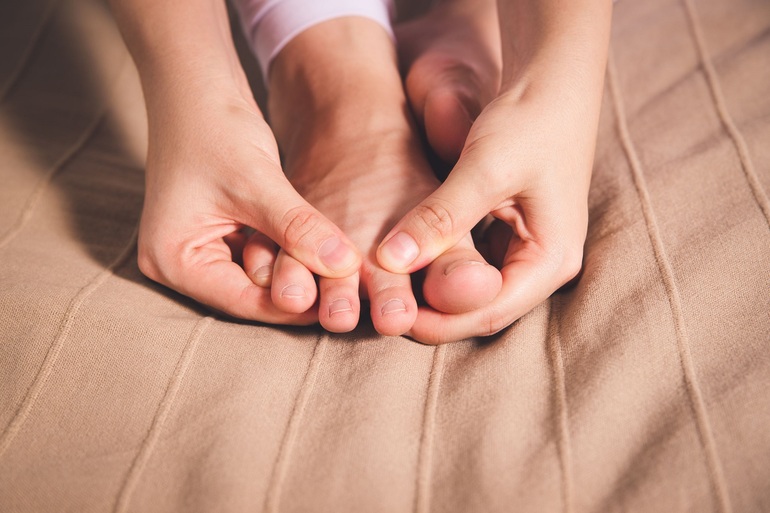The Centers for Advanced Orthopaedics is redefining the way musculoskeletal care is delivered across the region with locations throughout Maryland, DC, Virginia and Pennsylvania.
Home Care Guidelines For Bunion Management

Although our practice is still open and we’re seeing patients, now more than ever patients are looking into ways to care for their health on their own before seeking out a physician for non-emergency conditions. This is incredibly encouraging, especially in a time when social distancing is important, but it also means people are getting more involved in their treatment. We’re always here to help, but when patients put forth more effort to help solve their issues on their own, treatment often begins sooner, and that can speed up the recovery process.
With that thought in mind, we want to share some tips for how you can manage early stage bunions on your own from the comfort of your home. We’ll gladly help if you need more hands-on care, but if you want to try a few things to help mitigate your bunion’s progression on your own, consider the following tips.
Bunion Care At Home
Here are some changes and daily adjustments you can make to help slow or stop the development of your bunion:
- Weight Management - Bunions can develop quicker if you are putting more stress on your feet, and if you’re overweight or obese, you’re overstressing your feet with every step you make. Dropping just one pound takes four pounds of pressure off your lower body, so work your way towards a healthy weight with diet and exercise to help take some pressure off your big toe joint.
- Shoe Changes - Closed-toe shoes and ill-fitting footwear can put undue stress on your big toe joint and exacerbate your bunion. If you’re going to buy some new wide toe shoes online, consider buying a couple options to ensure you find one that fits your foot just right. Familiarize yourself with your return options prior to buying so that you don’t run into any surprises once you’ve found the shoe that’s right for you.
- Go Barefoot - If you’re working from home or find yourself spending more time inside self isolating, take your shoes off and let your feet be free. Even shoes that fit well can put some pressure on your big toe joint as you walk. If you don’t need the protection that a shoe offers, go barefoot or just wear socks when walking around the home.
- Sleeping Splint - Toe splints can help to realign your big toe joint, and they are a pretty cheap mitigation option. Many patients put the splint on as they are going to bed so the splint can help realign the joint for the next eight hours. You can also wear some types of splints inside your shoe if you’re going out.
- Ice - Ice won’t reverse a bunion, but it can help to reduce inflammation and make the area less uncomfortable. If you’ve been on your feet for a while and your notice that your big toe joint is aching a bit, apply a cold pack for 10-15 minutes to help reduce swelling and pain.
- Simple Stretching Exercises - Bunions slowly inhibit our ability to move our big toe joints as fully as we could in the past. Targeted stretching and physical therapy exercises can help you maintain flexibility in the joint, which will make movement less painful. Heel raises and toe spreaders are two simple exercises that work to improve your range of motion.
If you keep these tips in mind, we’re confident you’ll be able to help mitigate discomfort caused by your bunion until you have time to see a specialist. In some cases, these techniques may even prevent the need for you to see a physician for your bunion. For assistance with any part of your bunion care, reach out to Dr. Neufeld and the team at The Centers For Advanced Orthopaedics today.